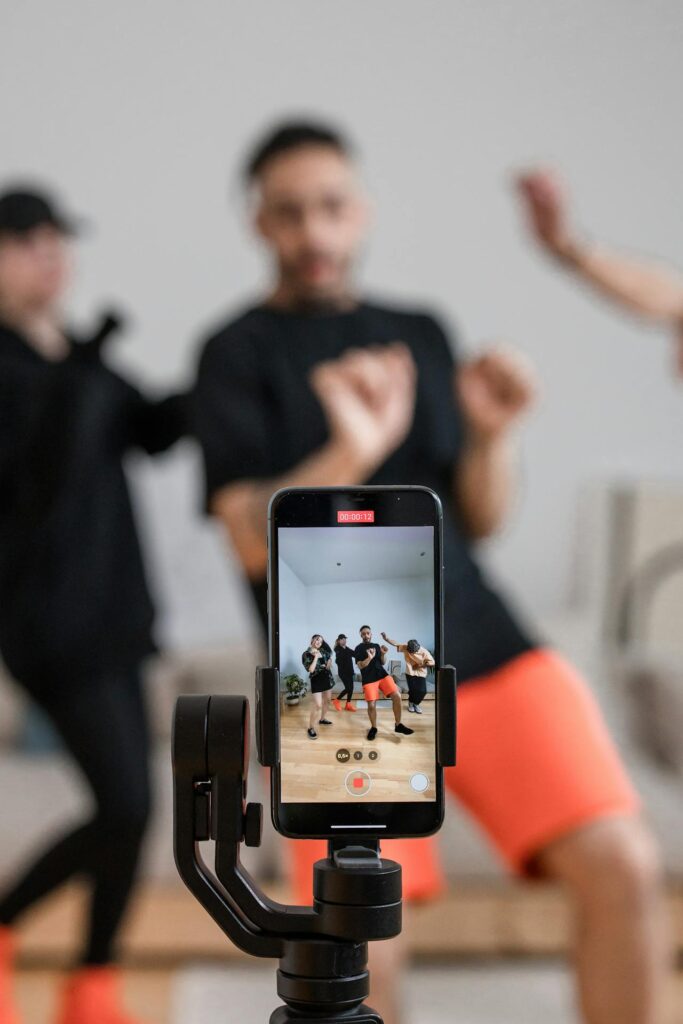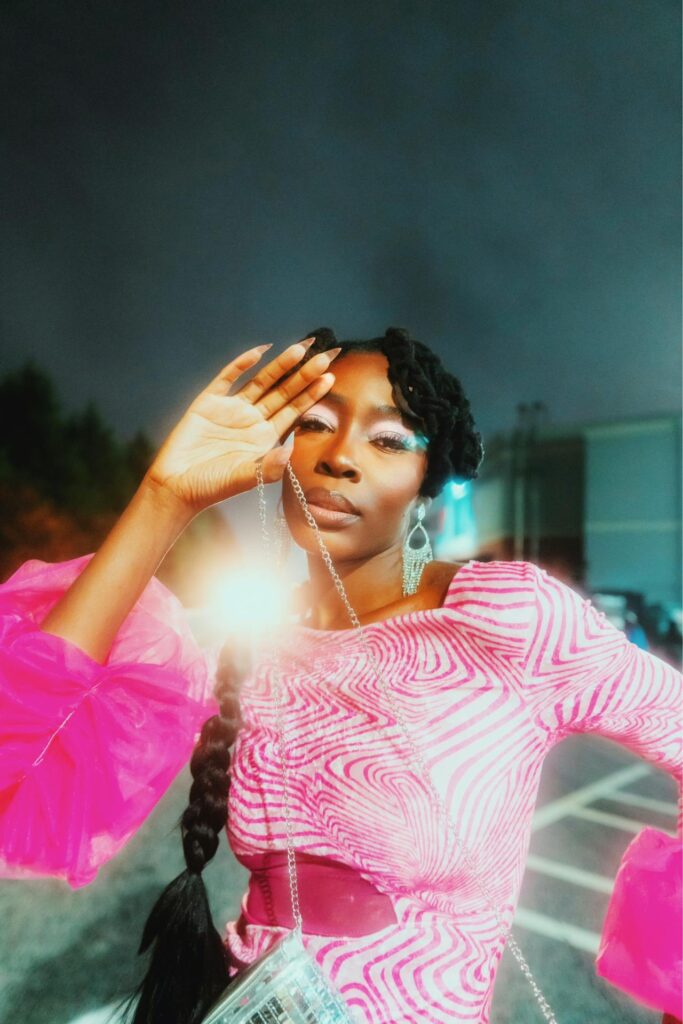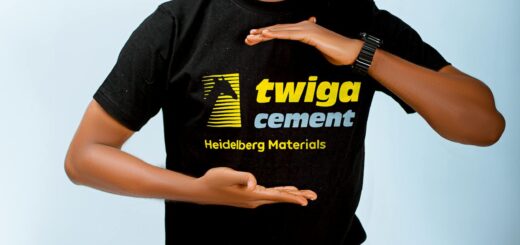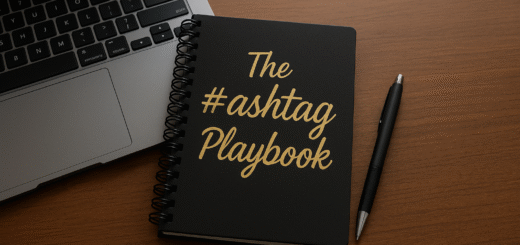The DIY Video Trick That’s Beating $10K Productions (and Raking in Sales)
What if the most powerful marketing video you ever create didn’t require a budget, a script, or even a tripod?
Across every platform – from TikTok to Instagram to email – low-production videos are outperforming their slick, high-cost counterparts.
Why?
Because raw, real, and unpolished content builds trust—and trust drives conversions. As big brands scramble to appear more “authentic,” solo creators and scrappy marketers are winning simply by hitting record on their phones.
If you’re still thinking you need a big budget to get big results, you’re missing the biggest opportunity in marketing right now.
This shift isn’t just a trend – it’s a strategic, scalable way to build credibility, reach your audience faster, and drive real action. In the words of Tiffany Grinstead, vice president at Nationwide, “Low-production video drives action across social media… This extremely effective and low-budget tactic is hugely underutilized and will be especially important as younger generations come of age with expectations around credibility.”
Let’s break down why this matters and how to make it work for your brand.
The Numbers Don’t Lie: Simple Videos Work
Low-production videos may look casual, but the results they deliver are anything but.
- Short-form video has the highest ROI of any social media content format, according to HubSpot’s 2024 State of Marketing report.
- 91% of businesses now use video as a marketing tool, and a significant portion of them use mobile devices and simple setups (Wyzowl, 2024).
- 84% of consumers say they’ve been convinced to buy a product or service by watching a brand’s video – most of which are viewed on mobile devices where authenticity matters more than polish (Wyzowl).
- TikTok and Instagram Reels, both dominated by low-fi, face-to-camera content, drive the highest organic reach compared to any other format.
Consumers, especially Gen Z and Millennials, are actively wary of overly polished content. The more “produced” it looks, the more likely they are to assume it’s just another ad. But a simple, direct-to-camera message feels like a conversation – not a pitch.
Why Low-Production Videos Build Trust
There’s a psychological shift happening. As audiences get more video-savvy, authenticity is replacing perfection as the currency of trust.
Highly produced videos can feel staged, corporate, or even manipulative. In contrast, a founder speaking straight into a phone camera from their office or kitchen? That feels real. It feels like someone pulling back the curtain to say, “Here’s who we really are.”
This is particularly important when marketing to younger generations:
- Gen Z consumers trust influencer-style content more than traditional advertising.
- 74% of consumers say they trust a company more if it has user-generated content or behind-the-scenes videos that feel spontaneous or informal (Stackla).
- People are 2.4x more likely to say user-generated video content is more authentic than brand-created content (Nielsen).
So if your video looks like it was filmed on an iPhone in five minutes? Good. That’s exactly what they want.
The Psychology Behind Low-Fi Video Success
Why It Works, Backed by Behavioral Science
There’s more to the success of low-production video than just budget or speed—it taps into how the human brain is wired. If you’ve ever felt oddly connected to a YouTuber or TikToker you’ve never met, you’ve experienced this firsthand. Here’s the psychology behind why these raw, simple videos actually work better than polished productions:
Parasocial Relationships: The Power of “I Know You”
Low-fi, face-to-camera videos mimic real, one-on-one interactions—creating what psychologists call parasocial relationships. These are one-sided connections where viewers feel a bond with someone they watch frequently, even if they’ve never interacted personally. This emotional connection builds trust and loyalty – essential for turning followers into customers.
- A 2021 study published in Psychology of Popular Media found that parasocial relationships formed through casual, direct-to-camera video increased trust and perceived intimacy with content creators.
- According to Edelman’s Trust Barometer, 61% of people say they trust “people like themselves” more than business executives or celebrities – which explains why solo entrepreneurs often outperform corporate brands in engagement.
Pattern Disruption: Why Low-Fi Grabs Attention
When you scroll through Instagram or TikTok, your brain filters out anything that looks like a traditional ad. That’s where low-fi video becomes a secret weapon: it breaks the pattern.
Highly produced content blends into the background noise. But a raw, unscripted video? It feels like a FaceTime call – and that stops the scroll.
- Marketing psychology research shows that content which disrupts expectations—visually or verbally—increases attention and recall by up to 70% (Journal of Consumer Research, 2020).
- Viewers process “unfiltered” content as more authentic, which increases watch time and perceived value, even if production quality is low.
Mirror Neurons and Relatability: Why We Engage With People Like Us
When we watch someone speak directly to us on camera – especially someone who looks, sounds, or behaves like us – our brains light up as if we’re the ones speaking. This is due to mirror neurons, the part of the brain involved in empathy, imitation, and social bonding.
- Research from the Journal of Neuroscience shows that viewers experience greater emotional resonance and learning when the presenter feels familiar or similar to them.
- This is why casual clothing, imperfect delivery, or a messy background don’t hurt your brand – they humanize it.
When viewers see someone who feels “like them” sharing insights or solutions, conversion rates go up because they subconsciously think, “If they can do it, so can I.”
In a Nutshell? The Brain Likes Real.
Low-fi video doesn’t just feel more honest – it activates the same psychological mechanisms that build real-life relationships. That’s why the most basic video, filmed in your kitchen, might convert 3x better than a studio-perfect one.
And as attention spans shrink and skepticism rises, tapping into these subconscious triggers is one of the smartest moves a solo entrepreneur can make.
Where Raw, Real Videos Make the Most Impact
Low-Production Content That Punches Above Its Weight
Low-production videos aren’t just “good enough” for certain channels – they’re actually ideal for them. In fact, the most effective platforms today practically reward simplicity, speed, and authenticity. Here’s where these scrappy videos absolutely shine:
- Social Media:
Let’s be real—social media is built for quick, raw, scroll-stopping content. Platforms like TikTok, Instagram Reels, YouTube Shorts, and Facebook Stories were designed for off-the-cuff, vertical videos shot on mobile phones. These platforms prioritize speed, relatability, and trend participation over perfection.
- TikTok’s algorithm, for example, doesn’t reward polish – it rewards watch time and engagement. A shaky, 20-second selfie video with a good hook will almost always beat a slick promo.
- Instagram Reels and YouTube Shorts are currently some of the fastest-growing formats, and their best-performing videos often look like they were shot in someone’s bedroom – because they were.
Pro Tip: Use native tools like stickers, text overlays, and trending sounds to boost visibility. The algorithm favors content that looks and feels native to the platform.
- Email Marketing:
Want to make your emails less “meh” and more magnetic? Drop in a short, personal video. A simple “face-to-camera” thank-you message or 60-second explainer can boost open rates and click-throughs dramatically.
- According to Campaign Monitor, video in emails can increase click-through rates by up to 300%.
- Bonus: If you’re in a service-based business, this builds familiarity fast. A warm, casual message saying “Hey [Name], here’s something to help you this week…” beats a wall of text any day.
Pro Tip: Host the video on YouTube or Vimeo and include a thumbnail with a play button overlay to drive more clicks.
- Product Pages:
You’ve probably seen those slick animated explainer videos—but guess what? Buyers often trust raw product demos more. Why? Because they feel real. A simple video of you or a customer using the product, showing results, or answering FAQs can outperform studio-grade promos.
- Studies show that 84% of consumers say they’ve been convinced to buy after watching a brand video—especially when the video feels relatable and personal.
- Amazon sellers and DTC brands are increasingly adding selfie-style “why I love this product” clips to boost conversions—and it works.
Pro Tip: Show your face, show the product, and narrate as if you’re giving a friend a recommendation.
- Course Creation:
Digital educators, rejoice: you don’t need a film crew to teach effectively. Some of the most successful online courses and digital products use nothing more than screen shares, webcam intros, and slide decks.
- Why? Because learners don’t want Hollywood. They want clarity, personality, and useful content.
- Kajabi, Teachable, and Podia creators regularly launch six-figure courses with nothing but their laptop, webcam, and enthusiasm.
Pro Tip: Keep lessons short and conversational. Students respond better to bite-sized, real-talk content than long, over-edited lectures.
In short, low-production video thrives in every major touchpoint of your business—from lead generation to sales, from customer care to internal systems. It’s not a limitation; it’s a strategy.
And the best part? You don’t need a team. You don’t need gear. You just need a little courage and your phone.
Tips to Make Low-Cost Videos That Convert
The beauty of this style is that you don’t need to be a filmmaker—you just need to be clear and real. Here’s how:
- Use What You Have
Your phone, natural light, and a quiet room are enough. Clean your lens, face a window, and press record.
- Keep It Short and Focused
Attention spans are shrinking. Aim for 30–90 seconds max. Get to the point fast—start with the payoff: “Here’s a quick tip to save time on your taxes…” or “This one thing doubled our traffic last week…”
- Use Captions
Most people watch with the sound off. Use auto-captioning tools or apps like CapCut, Submagic, or Descript to quickly add text.
- Be Yourself, Not a Script
It’s okay to use notes or a loose outline, but read it like you’re talking to a friend. Tone matters more than polish.
- Batch Your Content
Film multiple videos in one sitting. Change shirts or angles to give them variety. This is a massive time-saver.
- Leverage Trends, But Stay On-Brand
You don’t have to dance on TikTok, but jumping on a trending sound or format can extend your reach if it’s aligned with your message.
- Include a Call to Action
Even casual videos should prompt the viewer: “Hit follow for more,” “Try this today,” or “DM me if you’ve got questions.”
Production Cost: Practically Zero
Compare the two paths:
| High-Production Video | Low-Production Video | |
| Time to produce | Weeks | Minutes to hours |
| Cost | $1,000–$10,000+ | Often $0 |
| Gear needed | Lights, mics, cameras, editing software | Smartphone and tripod (optional) |
| Audience reaction | “Nice ad” | “This feels real” |
| Frequency | Rare | Weekly or daily |
The low-production route lets you show up more often, test messages faster, and connect with your audience in a way that feels unfiltered and human.
Proof It Works: Brands Growing Fast with Low-Budget Video
Some of today’s most successful brands and creators didn’t rise by investing in high-end production. They won by being real, fast, and relatable. These stories prove that low-production video isn’t a compromise – it’s a strategic advantage.
- Duolingo: From Language App to Viral Mascot
Duolingo’s TikTok strategy didn’t feature slick ads or polished lessons. Instead, they handed their green owl mascot a smartphone – and embraced chaos. The result? 10M+ followers and billions of views.
The videos show the owl doing absurd, hilarious things: chasing employees, reacting to trends, poking fun at the brand. All filmed on a phone, right in the office.
Why it works:
- Feels like content a friend would post
- Taps into trends in real time
- The mascot is funny, human, and consistent
Solo marketer takeaway: You don’t need a gimmick—just a personality. Humor, consistency, and timeliness can outperform any big-budget campaign.
- Ali Abdaal: Dorm Room to 7-Figure Creator
Ali Abdaal began filming in his dorm room with a webcam and a desk lamp. No studio. No editors. Just friendly, useful content. Today, he has 4M+ YouTube subscribers, online courses, and a thriving business built on approachability.
Why it works:
- Content was honest and helpful, not flashy
- Prioritized value over polish
- Felt more like a chat than a lecture
Solo marketer takeaway: Your message matters more than your setup. Speak clearly, be helpful, and treat the camera like a conversation.
- Glossier: Turning Natural Into a Brand Aesthetic
Glossier redefined beauty marketing by embracing minimalism. No pro models, no glossy sets – just real employees (and founder Emily Weiss) chatting about products in natural light with minimal makeup.
Why it works:
- Feels like being part of an inner circle
- Behind-the-scenes vibe makes products accessible
- Doesn’t feel like marketing – which is why it works
Solo marketer takeaway: The less corporate you act, the more you connect. Authenticity is your edge, especially in beauty, wellness, or coaching.
The Common Thread? Humanity Wins
These brands didn’t go viral because they were polished. They won because they were:
- Timely
- Relatable
- Consistent
- Authentic
- Fast
They leaned into raw connection – and it paid off in loyalty and conversions.
Whether you’re building a personal brand, launching digital products, or growing a channel, these stories prove it: Real outperforms perfect.
Got a phone and something to say? You’re ready.
Repurposing Low-Budget Videos Into a Full Content Engine
Stretch One Simple Video Into a Week’s Worth of Content
Creating a video doesn’t have to be a one-and-done effort. In fact, one 60-second, low-budget video can become the seed for an entire week of content—across multiple platforms, in multiple formats.
This is the power of the “Create Once, Distribute Many” approach. It’s one of the smartest ways to stay consistent, expand your reach, and make the most of your time.
Let’s say you film a quick tip video on your phone – something helpful and easy to act on. From that one clip, you can create:
- A Tweet Thread (or X post series)
Break the tip into 3–5 short points. Add some personality and end with a question to drive engagement. - A Short Blog Post
Transcribe the video and expand it into a 300–500 word post. Add a short intro, a takeaway, and link the original video to keep readers engaged. - A YouTube Short
Repost it as-is. YouTube actually favors this type of repurposed content. Just add a solid title and 2–3 hashtags in the description. - A LinkedIn Post
Add professional context or insight, then upload the video with a compelling caption. - A Podcast Clip
Extract the audio and turn it into a mini-episode or “tip of the week.” Easy, valuable, and it gives your voice another platform.
The Best Part? You Don’t Have to Do It All
Choose 2–3 of these formats each week. Over time, your content compounds, your reach grows, and your message becomes unmissable.
So the next time you film a quick video, ask: How many ways can I use this?
With the right strategy, one video becomes a full-blown content engine.
Awkward on Video? Congrats, You’re Relatable.
What Holds People Back – And Why You Shouldn’t Let It Stop You
If you’re feeling some resistance to putting yourself on camera, you’re not alone. Just about every solo entrepreneur has had these thoughts (even the ones now crushing it on video). The good news? Most of the common objections come from false assumptions—and you can overcome all of them with a mindset shift and a few practical tools.
Let’s walk through the top fears and bust them wide open.
“I hate how I look on camera.”
You’re not alone – everyone feels this way at first. But here’s the truth: your audience isn’t looking for perfect—they’re looking for real.
They’re not scrutinizing your hair, your lighting, or whether you flub a word. They’re looking for help, insight, or inspiration—and if you deliver that, you win. In fact, showing up imperfectly makes you more relatable.
Research shows that audiences connect more deeply with speakers who appear genuine and vulnerable – especially in educational or service-based content.
Bottom line: If you’re showing up to serve, no one cares about your flyaways or hoodie.
“I don’t know what to say.”
Feeling stuck? You don’t need a teleprompter. You just need a framework. Try this simple 3-part formula to get started:
- Problem: “Here’s something I used to struggle with…”
- Solution: “Here’s what I found that actually works…”
- Call to Action: “Try this out and let me know if it helps.”
You’re not giving a TED Talk. You’re sharing one helpful idea that makes someone’s day easier, better, or more informed. That’s it.
Still unsure? Look at the questions people ask you in emails, DMs, or client calls. Those are all great video topics.
“It’s not professional enough.”
That’s the entire point. High production feels like advertising. Low-fi feels like a conversation—and conversations build trust.
Remember what Tiffany Grinstead from Nationwide said:
“Low-production video drives action across social media… This extremely effective and low-budget tactic is hugely underutilized.”
Professional doesn’t mean polished—it means purposeful. If your video has a clear message and a helpful takeaway, it’s doing its job.
Plus, trends are shifting away from polish. Viewers are tuning in for value, not vibes.
“It won’t work for my niche.”
Let’s put that one to bed with a few examples:
- B2B? A 30-second tip from a SaaS founder builds more trust than any PowerPoint deck.
- Health & wellness? Show your morning routine or answer a common question like “Is it normal to feel tired after taking magnesium?”
- Finance? A quick tip on saving or taxes in plain English is gold on TikTok and LinkedIn.
- Coaching or consulting? Share a mindset shift or client story. Boom—trust earned.
- Creative services? Walk through your design or writing process in real time.
If you’re in business, there’s something you can show, teach, or explain—and that is your content.
The Real Objection: “What if I’m not good at this?”
You probably won’t be… at first. But neither was anyone else. The secret? Keep going.
Your first video is the worst it’ll ever be. Every video after that is a win. You learn faster when you do, not when you wait. And when you show up consistently, your audience starts rooting for you because they’ve seen you grow.
Don’t let perfection stop you from creating something powerful. Every excuse you just read? Someone else had it—and posted anyway.
And now they’re reaping the rewards.
Next-Level Tactics to Boost Your Results
You’re Posting Videos—Now Let’s Make Them Work Even Harder
Once you’ve found your rhythm with low-budget videos, it’s time to squeeze more ROI out of every post. These next-level tactics help your content go further, get seen by more people, and spark deeper engagement—without spending a dime.
Think of this as the growth-hack layer to your scrappy video strategy.
- Use Native Captions and Trending Sounds (TikTok, Reels, Shorts)
Most people scroll with the sound off. Native captions (added inside the app) help hold attention longer. Bonus: using trending audio – even at low volume – can boost reach thanks to platform algorithms.
Pro tip: You don’t need to lip-sync or dance. Just layer a trending sound under your voice and let the algorithm do its thing.
- Pin High-Performing Videos to Your Profile
Use your pin slots strategically. Highlight videos that show off your best tip, a viral moment, or a quick intro to who you are and what you offer. These pins act as your highlight reel and often drive more followers and profile clicks. - Pair Raw Video with Strong Copy
Your video can be simple, but your caption shouldn’t be. Use a great hook, a bit of story, or an emotional angle to add context and drive engagement.
Try lines like:
- “This one tip saved me 5 hours a week. No tech, no fluff.”
- “Here’s the video I almost didn’t post (but I’m so glad I did).”
- “I didn’t think this would work – until it did.”
Raw video + strong copy = serious traction.
- Use Polls or Questions in Stories to Spark Engagement
After sharing a video in your Stories, follow it with a quick poll or question. People love to click, even if they don’t comment publicly.
Try asking:
- “Have you tried this before?”
- “Which tip should I expand on next?”
- “Want the template I mentioned? Vote below!”
- “What’s your biggest challenge with [your topic]?”
These small interactions help boost visibility and open the door for DMs.
Bottom Line:
Your videos don’t need more polish. They need strategy. These subtle tweaks help you get more from the content you’re already creating – helping you grow faster, even if you’re still filming in your hoodie at the kitchen counter.
Trust is Built on Transparency, not Lighting
Real beats Perfect.
Every.
Single.
Time.
If there’s one truth to take from everything we’ve covered, it’s this: raw, real, low-production video works—not in spite of its imperfections, but because of them.
You don’t need studio lights, a teleprompter, or a content team. What you do need is a face, a voice, a message, and the courage to hit record.
Today’s audiences crave honesty over polish. They trust people who show up as they are. They don’t want more ads; they want real conversations, quick tips, and a glimpse behind the curtain.
That means if you’re a solo entrepreneur, you’re actually perfectly positioned for this new era of video marketing. You’re not a polished brand machine—and that’s your superpower.
So here’s your challenge:
Film one simple video today.
Pick a tip, a story, a customer question—anything—and talk directly to your audience for 60 seconds. Don’t overthink it. Don’t try to make it perfect. Just be helpful and be yourself.
Because in 2025 and beyond, done is better than perfect.
Faster beats fancier.
And real always wins.
You’ve got this. Now go hit record.

Author offers a FREE copy of this book to his next door neighbor... to prove he's not a drug dealer!
Now claim your FREE COPY.
and follow the step-by-step instructions for making the kind of money (and living the kind of lifestyle) that'll get your neighbors curtains twitching with curiosity!
Enter your details below to discover how to claim your FREE COPY of 'Six Figures A Year In Info Publishing' ...
Privacy Policy : We value your privacy. You can unsubscribe from receiving future emails with 1 click at any time.


























